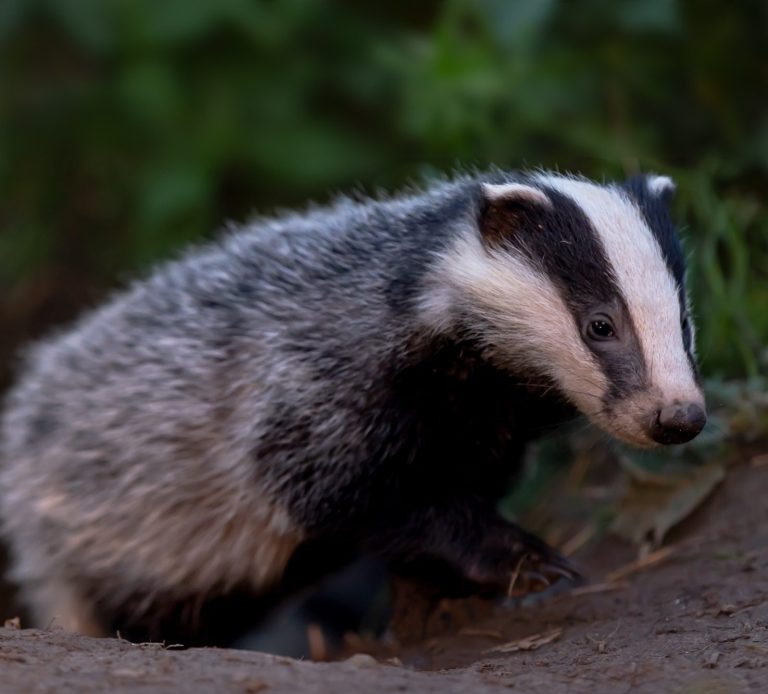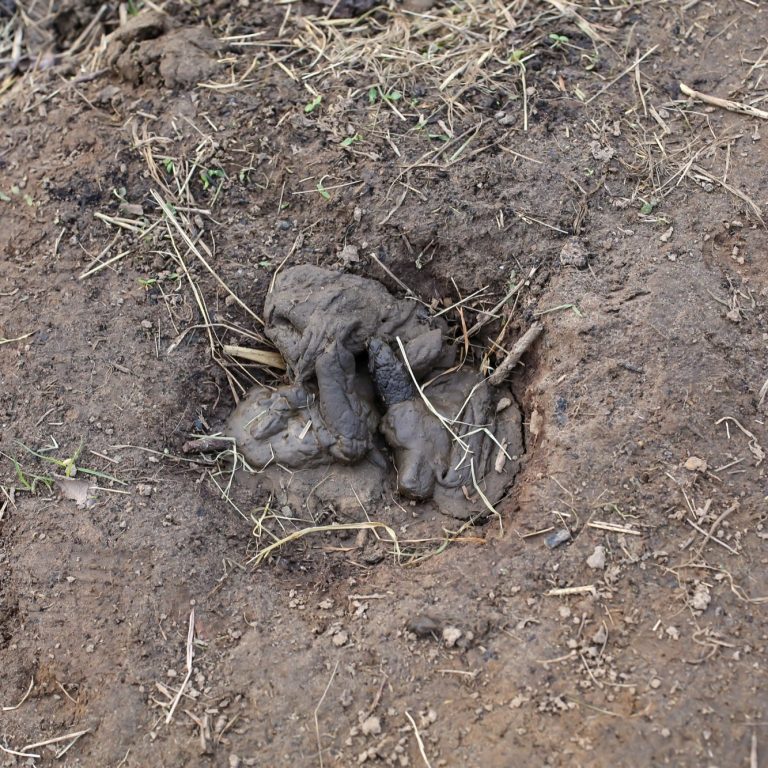THE BADGER'S YEAR
LET'S TAKE A LOOK MONTH BY MONTH AT THE BADGER'S YEAR (under construction)

JANUARY
Awaiting the birth of cubs
The female badgers, the sows, are pregnant and are less active spending most of their time underground due to the cold weather, frozen ground and less food being available.
January is also a dangerous time for badgers as it's one of the months badger diggers and badger baiters go after the pregnant and nursing sows. This means being extremely vigilant and watching setts very carefully.
FEBRUARY
THE PEAK MONTH FOR WHEN CUBS ARE BORN
February is the month when most pregnant females, the sows, give birth to between one and five cubs, with the average litter size being three cubs. However cubs can also be born earlier in January and a bit later in March. Badger cubs are born blind and are covered in a silvery-white coloured down. The stripes on their little faces will begin to show within days.
Mating also increases in February and male badgers, the boars will travel more widely over their own and neighbouring badger territories in search of females to mate with.


The image of the latrine to the left was taken on 14th February and was right outside the entrance hole. Further investigation revealed the badger was not moving very far to use her latrines leading us to believe she had recently given birth to cubs. Wonderful news !
The fresh, dust free hay we had put near the sett had been taken down the entrance holes and one can imagine the tiny, newborn cubs snuggled up, cosy and warm.
It costs nothing to show a little kindness to animals !

MARCH
SPRING HAS ARRIVED AND THE BADGERS ARE BUSY !
Badgers are busy with housekeeping this month. They are extremely clean and houseproud animals, often changing their bedding and leaving it outside the sett to air. As the weather improves and food becomes more readily available, so too does badger activity and there is often a significant increase in the numbers of badgers killed on roads. In March, cubs are still completely dependant on their mothers.
APRIL
The nights are getting lighter now and some badgers will emerge from their sett before dusk.
Food is plentiful and if April is true to form with rain showers, the ground will be softer - making earthworms much easier to obtain. Badger cubs are now exploring their underground home and may venture right up to the entrance. Towards the end of the month, the little cubs will start to fully emerge. However, the sow is very protective over her cubs and makes sure they don't wander too far from the sett.



MAY
May is a wonderful month to start badger watching
What a delightful month May is in the badger's calendar year! The woodlands are full of fragrant bluebells and finally, the weather has turned warmer and the days are longer. The fluffy cubs are now three to four months old and will venture above ground to explore around their sett and play rough and tumble with the other badger cubs.
With shorter nights, badgers will often emerge in daylight, and for badger watchers an added bonus - the midges are not too bad and the cubs playing chase are a delight to watch.

JUNE
This month sees the longest day of the year, with darkness not falling until around 10pm. The image on the right was taken on the longest day at 9pm with badgers emerging at 8pm. This was one magical night, even for us as experienced badger watchers. The cubs played chase right in front of us and the field below was filled with yellow buttercups


JULY
It's hot ! hot! hot! and the ground is parched and hard for the badgers to dig. Prolonged dry weather can have serious consequences for the badgers and especially the cubs, as water sources dry up leading to dehydration and starvation.
Badgers can sometimes be seen asleep above ground in their day beds. Shh, don't wake them.
The cubs are growing fast and are about half the weight of their parents and now resemble mini adults.
Leaving a bowl of water at a badger sett can really help during these very dry months and may mean the difference between life and death.
AUGUST
The hot weather continues, but in the surrounding fields, the crops are ripening, wheat and maize


SEPTEMBER
Summer is now over and Autumn has arrived and with it a variety of different food sources, including cereals such as wheat, oats and barley, and fruits including blackberries, windfall apples, wild cherries and acorns.
OCTOBER
IT'S TIME TO FEAST AND FATTEN UP
As Autumn moves nearer to winter, its time for the badgers to fatten up on nature's bounty. This month, badgers will feast on windfall fruits such as apples, pears and plums, also eating berries and nuts to ensure they put on the fat reserves needed to see them through a long, hard winter.
Badgers are also busy preparing their setts and excavating tunnels. New bedding such as dried grass and leaves, moss and straw are brought in to the sett. It should be noted that unlike a fox, badgers don't bring food back to their sett. They are clean and tidy animals and do not like smelly carcases around their sett. If you see feathers or bones around a sett entrance, it's more than likely that a vixen and her cubs are occupying that part of the sett and not badgers.


NOVEMBER
A TIME TO WIND DOWN AND PREPARE FOR WINTER
The clocks have gone back and the days are short and the nights long. Badger watching is difficult now as it's dark by around 16.30 hours and the badgers' time of emergence becomes a bit erractic. Food is hard to find as the earth is often frozen and sucking up worms can be impossible.
There will be some mating activity.
DECEMBER
WINTER HAS ARRIVED AND IT'S TIME TO SLEEP
Although badgers do not hibernate in the same way as hedgehogs, they do sleep longer and deeper and may enter what is known as "torpor" and not emerge from their setts for days.
This month is also an important phase in the badger’s reproductive cycle. Sows can mate at any time of year but it is not until winter that the embryos implant in the womb and start to grow. This process is called delayed implantation.
Badger setts can and do get attacked in December, including Christmas Day and Boxing Day. Why? you may ask. Well most normal people are at home enjoying Christmas with their family so for badger diggers and baiters its an ideal time, less people out and about to catch them. Bear this in mind when you take your post Christmas Day lunch walk or Boxing Day stroll.

© Copyright. All rights reserved.
We need your consent to load the translations
We use a third-party service to translate the website content that may collect data about your activity. Please review the details in the privacy policy and accept the service to view the translations.